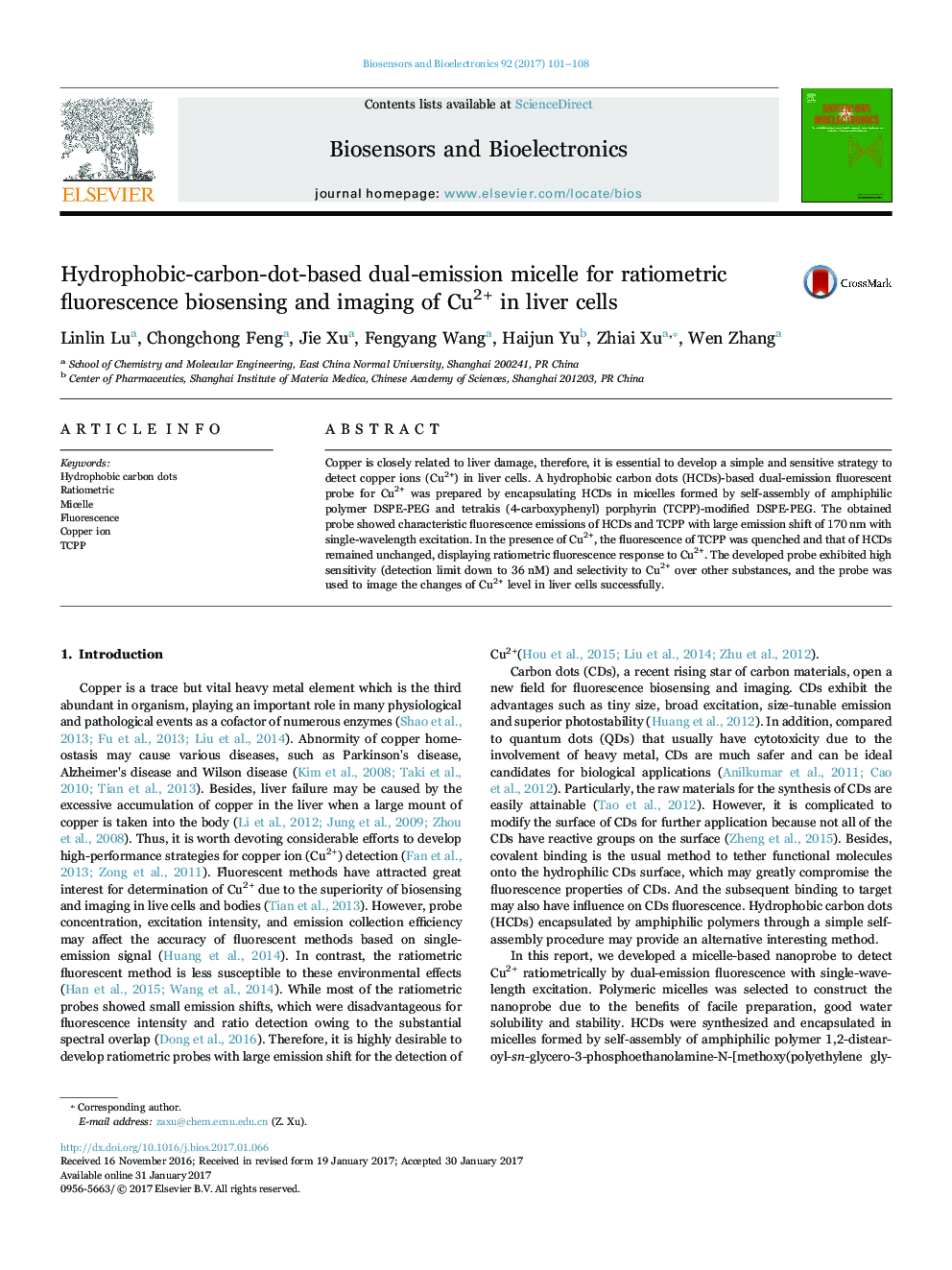| Article ID | Journal | Published Year | Pages | File Type |
|---|---|---|---|---|
| 5031583 | Biosensors and Bioelectronics | 2017 | 8 Pages |
Abstract
Copper is closely related to liver damage, therefore, it is essential to develop a simple and sensitive strategy to detect copper ions (Cu2+) in liver cells. A hydrophobic carbon dots (HCDs)-based dual-emission fluorescent probe for Cu2+ was prepared by encapsulating HCDs in micelles formed by self-assembly of amphiphilic polymer DSPE-PEG and tetrakis (4-carboxyphenyl) porphyrin (TCPP)-modified DSPE-PEG. The obtained probe showed characteristic fluorescence emissions of HCDs and TCPP with large emission shift of 170Â nm with single-wavelength excitation. In the presence of Cu2+, the fluorescence of TCPP was quenched and that of HCDs remained unchanged, displaying ratiometric fluorescence response to Cu2+. The developed probe exhibited high sensitivity (detection limit down to 36Â nM) and selectivity to Cu2+ over other substances, and the probe was used to image the changes of Cu2+ level in liver cells successfully.
Related Topics
Physical Sciences and Engineering
Chemistry
Analytical Chemistry
Authors
Linlin Lu, Chongchong Feng, Jie Xu, Fengyang Wang, Haijun Yu, Zhiai Xu, Wen Zhang,
